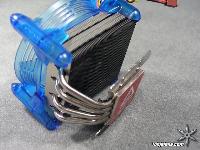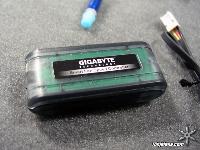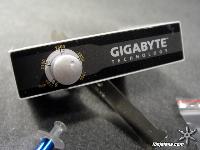After careful consideration I have decided to transfer all hardware review activities to a new domain. I purchased Hardwareasylum.com in 2012 and have been working hard to build a new and improved Ninjalane on that domain. If you are reading this you have reached one of the archived articles, news, projects and/or reviews that were left behind during the site migration.
Please update your bookmarks and be sure to visit the new and improved Ninjalane at Hardwareasylum.com
Gigabyte G-Power-Pro Heatsink Review
Author: Dennis Garcia
Published: Wednesday, June 01, 2005
Introduction
Gigabyte is probably most famous for their motherboards; they have been building them for quite some time and have made quite a name for themselves. Today however, we are not reviewing a Gigabyte motherboard but rather a new product, a monster heatsink called the G-Power Cooler Pro (GH-PDU21-MF).
As the photos show the heatsink uses heat pipe technology, and is cooled by an oversized 92mm translucent blue fan. The blades are actually 110mm across but will mount in a 92mm space. The heatsink is constructed of Nickel plated Copper with Aluminum cooling fins.
The fan utilizes a three prong power connector for RPM sensing and motherboard compatibility. A growing trend in fan design is to include a series of vents along the edges of the fan casing, this helps to control noise especially when the airflow is restricted.
The fan utilizes a three prong power connector for RPM sensing and motherboard compatibility. A growing trend in fan design is to include a series of vents along the edges of the fan casing, this helps to control noise especially when the airflow is restricted.
To help control noise Gigabyte has provided a special fan controller comprised of 2 parts. The first part is the control module; this unit links the control dial and power directly to the fan but will also work on non-variable speed fans giving it a universal application. The second part is the control dial that can be placed in a 3.5" drive bay or in a slot cover on the back of the PC. According to documentation the fan will spin between 1700 to 3200rpm, we found this to be quite accurate.
Other goodies include all the clips and clamps required for mounting this heatsink on just about any socket processor. Some of the other notable items include One cage (for Intel 775), some thermal compound (of the white greasy variety), one slot cover, a small bag of screws and washers, another small bag of screws and some 3m tape, and of course the ever popular manual in several languages.







